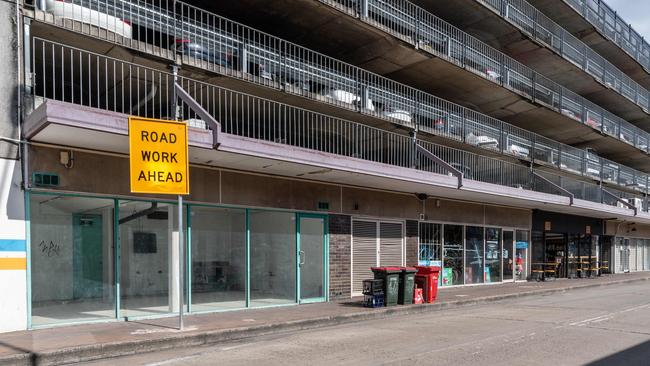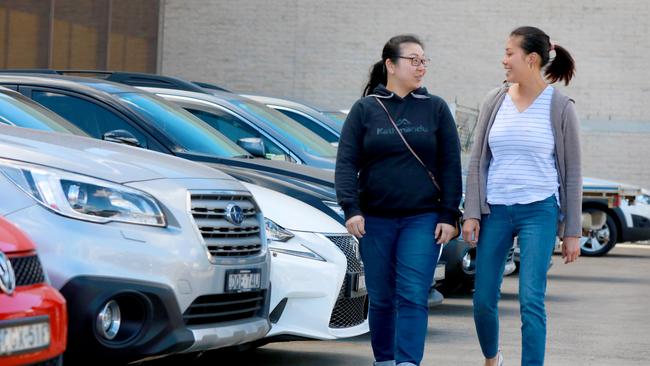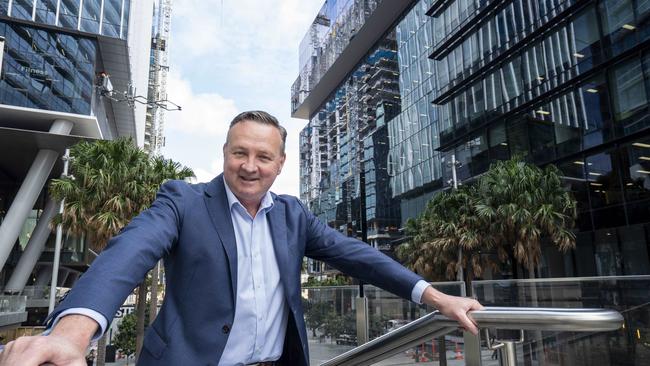Parramatta parking crisis worsens due to light rail, Powerhouse developments
Construction on major projects has seen Parramatta commuters stripped of almost 2000 parking spaces, prompting a radical plan to open up unused spaces to ease congestion in the CBD.
Parramatta
Don't miss out on the headlines from Parramatta . Followed categories will be added to My News.
It’s always been a battle to find a parking spot in Parramatta but it is more crippling now than ever with major projects such as the light rail, Powerhouse Museum and Metro wiping out public carparks and almost 2000 spaces.
A radical plan to open up previously unused spaces at Parramatta Leagues Club and Rosehill Racecourse, and increase on-street metered parking on the CBD fringe, and redevelopment existing carparks is on the cards to ease the parking shortage in the CBD.
In 2019, there were 26,909 spots across the Parramatta area including those owned by Parramatta Council, Westfield shopping centre and 21 private carparks.
Of those, the council owned 42 per cent and Westfield 34 per cent of spaces in the CBD.
But projects including the Parramatta Light Rail, Metro West and Powerhouse Museum have decimated carparks and made the struggle for short and long-term parking even harder.
The light rail cleared 400 on-street parking spots and 121 at the Fennell St carpark, while 596 spaces have been bulldozed at the Riverbank Carpark and 805 lots will clear at the City Centre Carpark (also known as the Horwood Place carpark) when the Metro West construction starts around October.
The woes have been highlighted in the council’s CBD parking strategy, which offers solutions to the crippling problem.

The document, which will soon be open to public feedback, said the council would work with Parramatta Leagues Club, which is willing to allocate 200 spaces on its top decks for commuters, while the Australian Turf Club will free up 600 spaces for the public at Rosehill Racecourse.
In the next two years, the council plans to increase on-street metered parking on the CBD fringe and get more use of the carparks at Eat Street in Erby Place, Parramatta Station in Wentworth St, and the Justice station at Hunter St, where it plans to install shade cloths on its top levels.
Adding another three levels for 1000 cars at Eat Street, which would only be used for four hours or less, is also proposed.

There would also be plans to redevelop Fennell St as a commercial development to include multi-deck public parking.
Motorists could pay $24 a day in Eat Street, Parramatta Station and Justice carparks, a move that is forecast to take 250 drivers off the roads and on the bus or train.
Based on 2019 figures before the coronavirus pandemic, the CBD would require five large multi-level carparks by 2024.
Deputy Lord Mayor Michelle Garrard said the strategy focused too much on CBD workers but neglected the community and assumed people would shun cars for walking and cycling.
“Those families have children, those families have cars, they will want to come to the CBD and shop and anybody with more than a child, or even a child, understands that catching public transport with young children isn’t even an option,’’ she said.
Labor councillor Donna Davis questioned why the City Centre Carpark would have to shut this year when the Metro project has been delayed by three years to open in 2030.

“The fact we’re having Horwood Place taken away when a project is being delayed by three years, it just doesn’t make any sense and I don’t understand how the state member (Parramatta MP Geoff Lee) can justify that,’’ she said.
But Liberal councillor Steve Issa said Parramatta’s public infrastructure boom outweighed the carpark deficit.
“While absolutely it’s an issue, these things aren’t done in isolation,’’ he said.
“The light rail is the envy of many councillors, the Metro is the envy of many councils. The museum is the envy of many councils. We’ve got a state government who’s poured money into this LGA to the extent that Geoff Lee gets embarrassed to ask for anything more purely because of the amount of money that’s come into this LGA.’’

Mr Lee said Parramatta needed parking for shoppers, restaurant patrons, business visitors and CBD workers.
“Parking within the CBD must be provided to ensure people don’t stop coming to Parramatta,’’ he said.
“However parking should also be available on the outskirts of the CBD for long stay parking options and pricing should be used to manage parking demand based upon users’ willingness to pay for convenience and proximity to desired destination.
“I would have liked to have seen an option for all new buildings in the CBD to be designed to feature public parking on lower levels. These carparks can be converted into office space in the future if demand for parking diminishes.’’
Business Western Sydney executive director David Borger said there were several under-utilised car spaces at Parramatta and encouraged businesses and landowners to turn part of their premises into commercial carparks when not used by office workers.
This could be done by using technology to detect free spots, he said.
“If there’s 10,000 car spaces that are under-utilised in the evenings and land owners can make a buck out of it why shouldn’t we try and encourage technology solutions that uses all those unused car spaces,’’ he said.
However, despite congestion escalating, he said many people were not willing to give up private transport.
“Parramatta’s future is a public transport future,’’ he said.

“It’s a growth pain of Parramatta but we still need to recognise that cars are still a way of life for many people and not everyone in western Sydney is served by public transport … I think we have to be realistic here as well.’’
Data from the 2016 Census backs that claim — 46 per cent of Parramatta’s workforce, which equates to 22,558 jobs, are filled by people who choose to drive, a figure that has dropped since 2011 when it was 54 per cent.
The council predicts it will regain 715 spaces when the 189 Macquarie St unit complex development opens and at Parramatta Square 3, 80 spaces have been allocated to the council for the public.
Post COVID-19, more workers are expected to continue working from home but there is a potential increase in those who work from the office expected to drive outside, albeit outside of traditional peak times.
MORE NEWS
More Coverage
Parramatta hotel boom: InterContinental, Hilton, QT, Travelodge, Sheraton planned
Two Blues home ground, Eric Tweedale Stadium, to open at Granville Park




